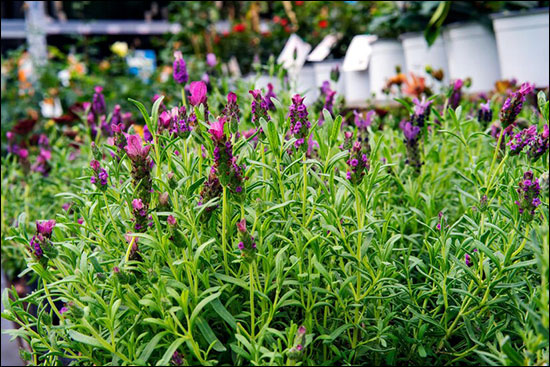Ustukhuddus / Arabian Or French Lavender (Lavandula Stoechas)- Ayurvedic Properties, Effects On Doshas & Dosage
Description
Ayurveda includes dietary changes and herbal medicines which have been widely used in India since ancient times. Ayurvedic treatment varies every time in every patient according to disease and according to the health of the patient, it has various means to show its effectiveness through panchakarma therapy, dietary changes, and yoga asanas. Herbal medicines include combining herbs with metals, minerals, or gems that are categorised under the Rasa shastra therapies that are used in different forms like may be in tablets or powder, or bhasmas. These all types of medicines in Ayurveda are meant to detoxify the body and balance all the doshas with strengthening and nourishment of Dhatus. In this article writing, we are going to discuss one of the best herbs described in Ayurveda with a respective name ustukhuddus.

General Information
This is globally used as an ornamental flower due to its beautiful blooms and a nice, tight growth habit. This species is categorised under the Lamiaceae family. This is widely found in middle coastal areas, in western India it grows mildly, its dried flower, and its growth is spread from the bay of Bengal to Mumbai. In India, we have two varieties of this flower. This is commonly known as dharu and alphajan in Hindi, and Arabic and French lavender in English. From its flowers, we gain a fragranced oil of red and yellowish colour. This is a kind of herbaceous shrub that grows up to 12 to 36 inches in height.
Special Note About This Plant
- Lavender is used to managing menstrual pain or dysmenorrhea.
- It helps in strengthening the nervous system and also acts as an anti-inflammatory in nature.
- It acts as cardiac-tonic.
- It alleviates the Kapha-vata disorders.
Systemic Classification
- Botanical Name – Lavandula stoechas
- Family – Lamiaceae
- Genus – Lavandula
- Species – L. stoechas
Habitat
- This is an evergreen shrub that grows up to 12 to 36 inches in height.
- Its Leaves are 1-4 cm long, purplish in colour, accompanied by bracts of the ovoid shape of 5 cm.
- The wrong heart-shaped appendage is formed on the upper 5 teeth of this plant.
- An indistinct two-lipped crown is formed over the plant that grows up to 8mm in length.
- Its flowers bloom nearly late spring and early summer that are pink to purple, these are 2 cm long and have a leafless stem about 10-30 cm and are 4-8mm long.
Ayurvedic Properties
- Rasa (Taste) – Katu (Pungent), Tikta (Bitter)
- Guna (Quality) – Ruksha (Dry), Teekshana (Sharp)
- Veerya (Potency) – Ushna (Hot)
- Vipaka (Post digestive effect) – Katu (Pungent)
- Karma (Action) – Balances the Vata and Kapha dosha
- Projyang (Part used) – Flowers and leaves are used for this plant
Effects On Doshas
- Due to its teekshan, ruksha, katu, tikta, and ushna qualities that pacifies Kapha dosha, and due to ushna potency, it helps to alleviate the vata dosha. Due to its shiro virechana guna it helps to detoxify the Kapha dosha from the Respiratory System.
- Be careful with its extra dosage – it can develop Trishna, and much more pittaj rogas, so during this time we can relieve the patient’s condition by giving pitta shaman dravyas and a cold infusion of lime water.
Practical Uses
- This herb is used to alleviate Kapha-vata disorders.
- When we apply it locally, this herb shows anti-inflammatory properties.
- This herb is widely used in unani medicines to treat brain disorders, removes confusion of smaller smaller things in mind, cures mental fatigue.
- When it is used internally, this acts on mental impairment with improvements in memory retention, nourishes the nervous system, and is used to alleviate pain and epileptic attacks.
- Due to these properties, it helps to manage the symptoms of stroke, epilepsy, and pain in joints.
- In the digestive system, it works on enlightening the digestive fire, gives carminative effects, pacifies abdominal pain, and is hepatoprotective in nature.
- In the circulatory system, it shows cardiac protective features.
- In the respiratory system, it is used to pacify pratishyaya (rhinitis), kaas (cough), shwas (bronchial Asthma). In these conditions, its decoction is used to alleviate these diseases.
- It manages depression, and anxiety along with it is effective in sinusitis.
Dosage
3 to 6 grams in powder form can be used.
Ayurvedic Products from French Lavender
- Ustukhuddus Sharbat
- Ustukhuddus Ark



